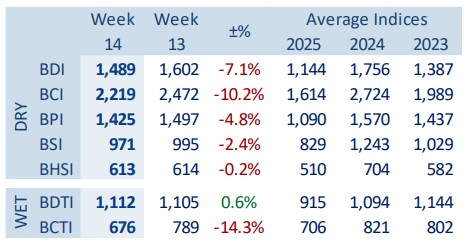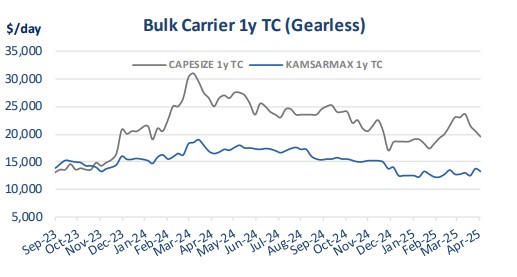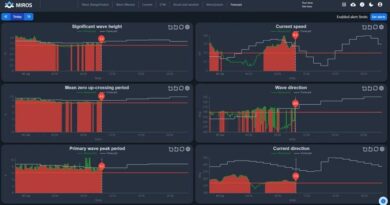Shipping to Face the Aftermath of a US-China Trade War

The shipping industry isn’t immune to the ongoing trade war between the US and China. In its latest weekly report, shipbroker Xclusiv said that “the latest escalation in U.S.-China trade tensions marks a new phase of economic confrontation, with profound implications for global markets and the shipping industry. On April 2, President Donald Trump announced sweeping tariffs, including a 34% levy on Chinese imports, 20% on EU goods, and a baseline 10% tariff on most global imports. These measures also hit emerging manufacturing hubs like Vietnam and Cambodia. The EU swiftly condemned the move, calling it a “major blow” to the global economy and warning of countermeasures. China, in a rapid and assertive response, imposed a matching 34% tariff on U.S. imports and introduced a range of other retaliatory measures, including export controls on rare earths, bans on specific U.S. firms and goods, and new investigations into American companies operating in China. The back-and-forth not only revives memories of the 2018–2019 trade war but amplifies fears of sustained global economic fragmentation. Historically, container and dry bulk sectors—particularly grain and steel cargoes—were hit hardest, but now the car carrier sector will also take a hit. With retaliatory tariffs likely to affect U.S. exports more than imports, the shipping market could see further pressure. Meanwhile, global trade flows may become more regionalized, disrupting established shipping lanes and reducing tonne-mile demand across major routes”.

Source: Xclusiv Shipbroker
According to Xclusiv, “the dry bulk S&P market saw a notable slowdown in Q1 2025, with total transactions declining by approximately 18% year-on-year, from 238 vessels in Q1 2024 to 196 vessels in the same period this year. However, despite a muted start in January (56 transactions), activity gradually gained momentum, rising to 66 in February and peaking at 70 in March. Segment-wise, Handysize vessels led activity with 50 transactions, although slightly down from 52 in Q1 2024. Supramax and Panamax segments also remained active with 38 and 36 sales respectively. Notably, Panamax vessels posted year-on-year gains, up from 23 transactions last year, indicating growing interest in this mid-sized segment. In contrast, Capesize activity fell sharply to just 16 sales, exactly half of the 32 recorded in Q1 2024”.

Meanwhile, “from an age perspective, the market displayed a clear preference for mid-age to older vessels, with ships aged 11–15 years accounting for the highest share of activity (45% or 89 vessels), followed by 16–20-year-old ships (25%). In a notable shift from Q1 2024, transactions involving modern vessels (0–10 years old) dropped significantly, representing just 12% of deals compared to 24% last year. Meanwhile, vintage tonnage (21+ years) doubled its market share from 7% in Q1 2024 to 15% in Q1 2025, including 7 ships over 26 years old, underlining the extended commercial lifespan owners are assigning to aging assets. In terms of nationality, Chinese and Greek buyers remained dominant, acquiring 32 and 19 vessels respectively.

Source: Xclusiv Shipbroker
However, both saw steep declines from last year, with Chinese buyers down 50% and Greek buyers down almost 75%. Vietnamese interest grew modestly, with 10 acquisitions up from 7 in 2024. On the sell-side, Greek owners remained the most active, offloading 44 ships (23% market share), followed by Japanese (19%) and Chinese (12%) sellers. This reshuffling hints at ongoing fleet renewal strategies, divestment of older assets, and regional repositioning in response to geopolitical shifts and environmental compliance pressure”, the shipbroker concluded.
Nikos Roussanoglou, Hellenic Shipping News Worldwide




